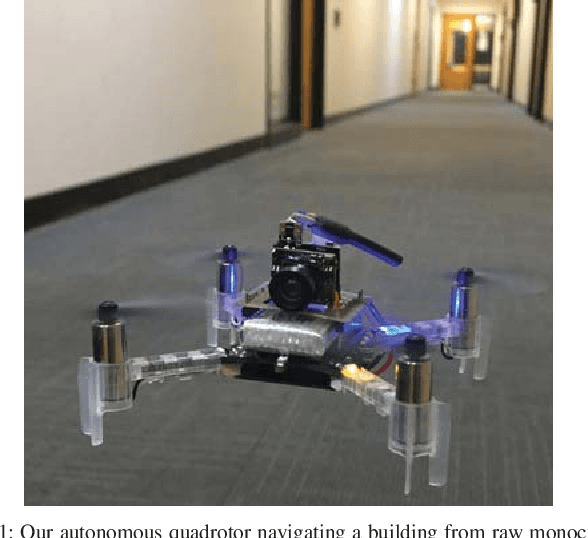Generalization through Simulation: Integrating Simulated and Real Data into Deep Reinforcement Learning for Vision-Based Autonomous Flight
Paper and Code
Feb 11, 2019



Deep reinforcement learning provides a promising approach for vision-based control of real-world robots. However, the generalization of such models depends critically on the quantity and variety of data available for training. This data can be difficult to obtain for some types of robotic systems, such as fragile, small-scale quadrotors. Simulated rendering and physics can provide for much larger datasets, but such data is inherently of lower quality: many of the phenomena that make the real-world autonomous flight problem challenging, such as complex physics and air currents, are modeled poorly or not at all, and the systematic differences between simulation and the real world are typically impossible to eliminate. In this work, we investigate how data from both simulation and the real world can be combined in a hybrid deep reinforcement learning algorithm. Our method uses real-world data to learn about the dynamics of the system, and simulated data to learn a generalizable perception system that can enable the robot to avoid collisions using only a monocular camera. We demonstrate our approach on a real-world nano aerial vehicle collision avoidance task, showing that with only an hour of real-world data, the quadrotor can avoid collisions in new environments with various lighting conditions and geometry. Code, instructions for building the aerial vehicles, and videos of the experiments can be found at github.com/gkahn13/GtS
 Add to Chrome
Add to Chrome Add to Firefox
Add to Firefox Add to Edge
Add to Edge